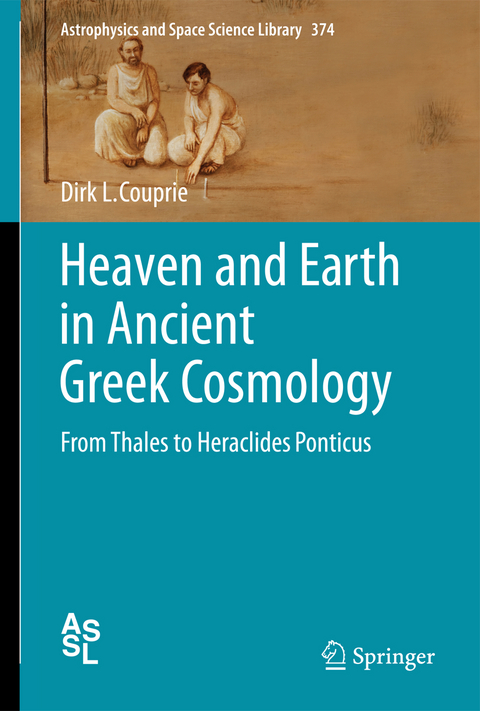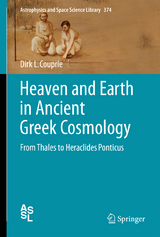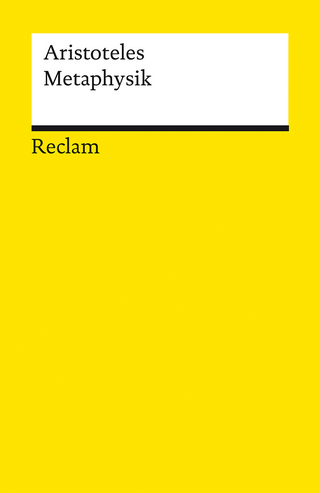Heaven and Earth in Ancient Greek Cosmology
Springer-Verlag New York Inc.
978-1-4419-8115-8 (ISBN)
In Miletus, about 550 B.C., together with our world-picture cosmology was born. This book tells the story. In Part One the reader is introduced in the archaic world-picture of a flat earth with the cupola of the celestial vault onto which the celestial bodies are attached. One of the subjects treated in that context is the riddle of the tilted celestial axis. This part also contains an extensive chapter on archaic astronomical instruments. Part Two shows how Anaximander (610-547 B.C.) blew up this archaic world-picture and replaced it by a new one that is essentially still ours. He taught that the celestial bodies orbit at different distances and that the earth floats unsupported in space. This makes him the founding father of cosmology. Part Three discusses topics that completed the new picture described by Anaximander. Special attention is paid to the confrontation between Anaxagoras and Aristotle on the question whether the earth is flat or spherical, and on the battle between Aristotle and Heraclides Ponticus on the question whether the universe is finite or infinite.
The Archaic World-Picture.- Archaic Astronomical Instruments.- How Thales Was Able to Predict the Solar Eclipse of 28 May 585 B.C..- The Shape of the Earth According to Thales.- The Riddle of the Celestial Axis.- The First Map of the Earth.- Anaximander, and the Discovery of Space.- Anaximander, A Survey of his Ideas.- The Discovery of Space: Anaximander’s Cosmology.- Anaximander’s Numbers: The Dimensions of the Universe.- The Visualization of Anaximander’s World-Picture.- Bellows or Lightning? A Curious Terminology Explained.- Critique of an Alleged Cosmic Architecture.- A Survey from Anaximander to Aristarchus.- With Fear For His Own Life: Anaxagoras as a Cosmologist.- The Sun at the Horizon: Anaxagoras’ Argument for a Flat Earth.- The Sun is as Big as the Peloponnesus.- The Dodecahedron, or the Shape of the Earth According to Plato.- Fear of Falling: Aristotle on the Shape of the Earth.- Heraclides Ponticus and the Infinite Universe.-
| Erscheint lt. Verlag | 6.4.2011 |
|---|---|
| Reihe/Serie | Astrophysics and Space Science Library ; 374 |
| Zusatzinfo | XXXIV, 262 p. |
| Verlagsort | New York, NY |
| Sprache | englisch |
| Maße | 155 x 235 mm |
| Themenwelt | Geisteswissenschaften ► Philosophie ► Metaphysik / Ontologie |
| Naturwissenschaften ► Physik / Astronomie ► Allgemeines / Lexika | |
| Naturwissenschaften ► Physik / Astronomie ► Astronomie / Astrophysik | |
| Naturwissenschaften ► Physik / Astronomie ► Relativitätstheorie | |
| Schlagworte | Anaximander’s cosmology • Ancient Greek philosophy • Cosmic Architecture • dodecahedron model for the sky • first definition of the dodecahedron • first map of the Earth • Heraclides • Ponticus and the Infinite Universe • Solar Eclipe of 585 BC • Thales’ theories on shape of the earth • the dimensions of the Universe |
| ISBN-10 | 1-4419-8115-2 / 1441981152 |
| ISBN-13 | 978-1-4419-8115-8 / 9781441981158 |
| Zustand | Neuware |
| Haben Sie eine Frage zum Produkt? |
aus dem Bereich




